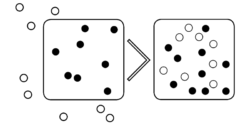Inclusive Teaching at Leeds

Our commitment to embedding inclusivity
At the University of Leeds inclusion is one of our core values, and our commitment to designing and delivering student education inclusively is at the heart of the Student Education Strategy 2020-2030 (delivered through the institution-wide Curriculum Redefined Project). We plan to ensure that teaching meets the needs of our diverse student population. To do this, we need to take steps to eliminate disadvantage resulting from:
- linguistic
- educational
- cultural backgrounds
- as well as anticipating the learning needs of students with common disabilities.
Designing and Delivering Inclusive Learning and Teaching
Taking an inclusive approach can often require a mindset shift in the way we plan, design and deliver our teaching, as well as how we assess achievement. It is also about recognising and welcoming difference and ensuring that all students feel equally valued. The term pedagogies is used to describe the approach or method taken to designing and delivering education, and we aim to deliver inclusive pedagogies throughout our curriculum.
The following principles of inclusive pedagogies act as a working definition for how we approach and understand inclusive learning and teaching at Leeds. These principles are intended to support colleagues in meeting our agreed baseline standards . They should be used as prompts for discussion and reflection, covering preparedness, responsiveness and community building. It is likely that these principles will develop over time, as our institutional understanding of the true nature of inclusion continues to evolve alongside changes in our wider society.

1. Effective Practice for all individuals
Teaching should be designed to meet the needs of all students as far as possible from the outset. Only when this cannot be done should individual or group interventions and adjustments be considered.

2. Anticipatory...of the barriers commonly experienced by a diverse range of learners
This should include those with common disabilities such as specific learning differences and mental health conditions. Planning should not assume that students with particular characteristics need to be brought up to a perceived acceptable level in order to fully participate and succeed.

3. Dynamic
Inclusive education is a reflective process, not a checklist. It requires a mindset which should be taken in all situations and should be an ongoing programme of enhancement. This includes creating opportunities for ongoing dialogue with students about their experiences, welcoming feedback through formal and informal channels, and demonstrating that the feedback is being acted upon.

4. Responsive...to the needs and identities of the cohort
Efforts should be made to understand and respond to this in planning, as well as being part of a dynamic process. This could be different year on year. Student needs cannot be assumed because they have a particular diagnostic label or belong to a particular group, but that can be a good starting point for planning. Responsiveness can mean adapting the approach for the benefit of all students, based on the specific requirements and identities of a small number of individuals.

5. Flexible...wherever they can be
This recognises that students may need to work in different ways and sometimes at different paces to achieve the same outcome. An understanding of any expected competence standards will help inform where flexibility can be built into delivery, engagement activities and assessment.

6. Accessible …digitally, physically and linguistically
This can be achieved through following good practice guidance when producing, designing and delivering everything within Student Education. Accessibility is an individual experience so we should be receptive to adapting the approach if needed. Where possible, ensure resources and opportunities can be accessed in various formats for students to choose what works best for them.

7. Clearly Articulated
Clear communication to students about what to expect and the rationale for any particular approaches will give them agency over their learning. Intended learning outcomes should inform the curriculum. Any standards of competency which all students are expected to meet should be identified and made visible to students at all levels (including pre-entry).

8. Context dependent
An individual student’s experience of being included in an activity or environment isn’t defined by their personal characteristics. It is achieved through thoughtful design decisions which recognize and value human difference. In the case of disability, the Social Model can help in showing that environmental and societal factors can create or reduce an individual’s experience of disablement.

9. Community Oriented...supporting interactions and building a cohesive cohort.
The learning community includes students as well as staff, and all members need to feel welcome and valued. Students shouldn’t feel that they’re competing with each other; more that they are working alongside each other, towards their own goals and aspirations. Acknowledging and surfacing the hidden curriculum will help ensure common vocabulary and points of reference.

10. The responsibility of all parties
All parties need to engage in the process. Staff are accountable for the design and delivery of teaching, but students also have a responsibility to help staff understand how to make their experience more inclusive, and should be empowered to do so. Clear guidance should be available for those who need it.
Examples of how these principles are demonstrated through teaching, as well as a range of prompt questions, can be found in this accompanying Sway resource (UoL access only)
Sway: Principles of Inclusive Pedagogies
Last updated: 24/02/23
